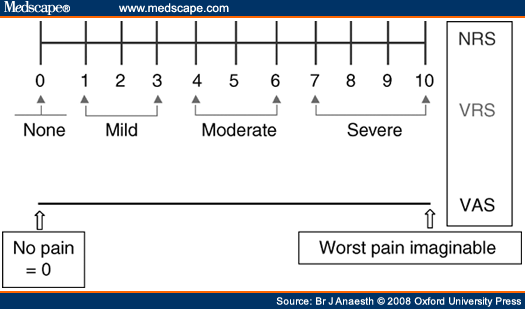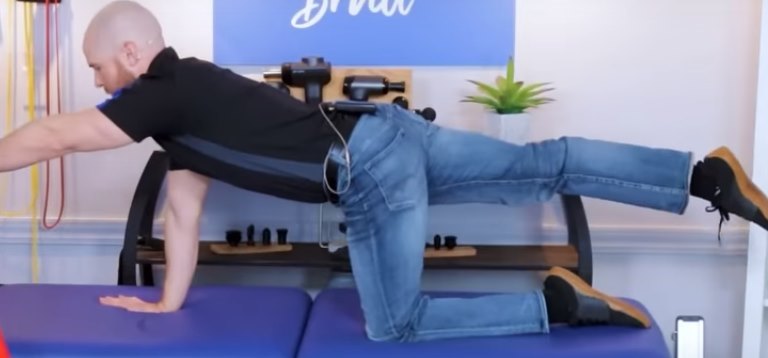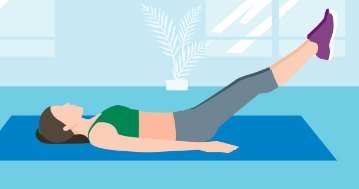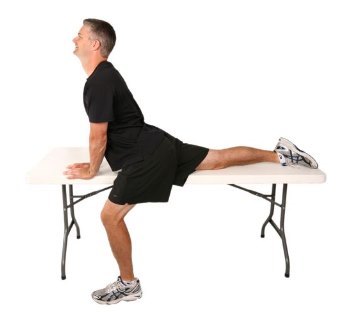Back Pain
Overview
Back Pain: items
{category}
File
- Back pain reduced for 95 percent of those who took vitamin D - 2003
- This file resulted in the creation of Vitamin D Life
See also
All items in category Pain and Vitamin D items
Overview Fibromyalgia or Chronic Fatigue and vitamin D
Bone - Health category listing has items along with related searches -
Note: People with healthy bones are less likely to have poor backs
Clinical Trial for Back Pain announced 2014, but not published as of 2024
extensive full text online, 100,000 IU vitamin D injection, unilateral lumbar disc herniation
Review of Over the Counter Treatment for Chronic Low Back Pain - Nov 2020

📄 Download the PDF from Vitamin D Life
MAGNESIUM (clipped from PDF)
Background
Magnesium acts as an NMDA receptor antagonist, blunting central nervous system sensitization to pain [36]. It is currently available in a variety of forms including magnesium oxide, citrate, and chloride. The most common adverse effects of magnesium are nausea, vomiting, and diarrhea. Magnesium also may interfere with coagulation and cause increased bruising and bleeding in those with clotting disorders. At toxic doses, magnesium may lead to hypotension, muscle weakness, depressed reflexes, and cardiac arrhythmias.
Randomized Controlled Trials (2 weeks infravenous then 4 weeks oral; pain relieved for 6 months)
A 2012 double-blinded RCT evaluated magnesium therapy in patients with chronic low back pain with a neuropathic component [37]. All enrolled patients received gabapentin 300 mg orally three times daily, amitriptyline hydrochloride 25 mg orally at bedtime, and celecoxib 200 mg orally twice daily. Treatment (magnesium) group patients received an intravenous infusion of magnesium sulfate 1 g in 250 ml saline 0.9% given over 4 h every day for 2 weeks. This infusion was then replaced with oral magnesium therapy twice daily for 4 weeks using capsules containing magnesium oxide 400 mg and magnesium gluconate 100 mg. All patients rated their pain intensity using an independent pain physician and an 11-point numeric scale (NRS). Patients in the placebo and treatment groups reported a statistically significant reduction in pain intensity at 2 weeks. However, this pain reduction continued throughout the 6-month follow-up period only among patients receiving magnesium therapy . The researchers concluded that magnesium therapy contributed to a significant reduction in chronic pain intensity at 6 months compared with both baseline and control group values [37].
Summary
Studies evaluating the use of magnesium in chronic low back pain are currently limited. However, existing evidence demonstrates an improvement over placebo for patients with chronic low back pain with a neuropathic component. Overall, magnesium appears to be a viable treatment option for those who have failed conventional treatment; however, further research is needed to identify the optimum dose and period of treatment.
See also PubMed
- High Prevalence of Hypovitaminosis D in Indian Chronic Low Back Patients Sept 2015
- 50% more likely to have a functional disability if low vitamin D
- 📄 Download the PDF from Vitamin D Life
- Genetic Alterations in Intervertebral Disc Disease Nov 2016
- Collagin, Vitamin D Receptor (3.1 X more likely to have disk degeneration if a type of poor VDR)
- See also in Vitamin D Life Vitamin D Receptor
- Assessment of Vitamin D status In Patients of Chronic Low Back Pain of Unknown Etiology April 2015
- Free PDF is online
- Predictive Markers for Vitamin D Deficiency in Young Patients with Low Backache 2016
- EVERY person with lower back pain had very low Vitamin D levels
- 📄 Download the PDF from Vitamin D Life
Back pain is 4th biggest global cause of disability: ages 50-69

Back Pain relief experience - Henry Lahore, admin of Vitamin D Life, Dec 2014
The following combination worked great - pain for only 3 days instead of the typical 10 days
Pain went from 8 ==> 3 on this visual scale

Back pain relief is probably due to one or more of the following:
1) Vitamin D - 50,000 IU - sublingual to get it to the bloodstream in a few hours instead of 12-20 hours
2) Magnesium Chloride - both topical twice a day and internal - I used 1 teaspoon (160 ml) every two hours, total ~ 800 mg/day
Previously had been taking about 50 mg/day ( realized after)
note: horses get 1600 mg/day Mg continuously in their feed
- Magnesium For Chronic Low Back Pain Dr. Murray
- Increased cellular Mg level by 11% - back pain went away in 4 weeks - and was still low at 6 months
- Magnesium for Pain Relief 2010
- Discusses medical study of Mg increasing brain chemical called “NMDA.” which reduced pain
- study suggests that magnesium deficiency can be a major amplifier of pain
- Ending Back Pain with the help of Magnesium Jigsaw health
- If there is too much calcium in your body – or not enough magnesium to balance out the calcium – your muscles cannot relax.
- These contracted muscles - or spasms or knots – are one of the major sources of back pain
- The company has a slow-release form of Magnesium (which should result in fewer gut problems)
See also Vitamin D Life Overview Magnesium and vitamin D
RCT of Mg injection for lower back pain March 2013 PDF at bottom
- Visual pain score 7.5 ==> 4.2
- intracellular magnesium increased by 11% Study 2001
- Low back pain score reduced by 49%
- Magnesium for leg cramps 2013 review
- PDF at bottom conflicting evidence
3) Vitamin C - 500 mg each hour
- Recommended to me along with Magnesium.
- Dr. correctly assumed (from previous communications) that I already had a high level of vitamin D
4) Omega-3
5) Back movement exercises while lying on the floor (Feldenkrais)
Update March 2016 - no back pain for more than 1 year
Vitamin D
Magnesium Chloride - internal
Feldenkrais movement exercise weekly as a prevention
Twisting exercise for 5 minutes at the first sign of lower back pain
Also Omega-3 and Vitamin K - which may help
Update Nov 2021 - 75+ - back exercises eliminated new back pain
Lie face down on bed with legs extended beyond the bed
raise legs to level of bed using back muscles
Also: Relieve immediate back pain: MgCl mixed with DMSO and/or Arnica
Update Jan 2023 TENS quickly treated my backpain
Note: In May 2023 the US FDA approved implant nerve stimulation to relieve backpain
Update June 2023 - strengthing core muscles appears to have totally eliminated my low back pain
There are many exercises on YouTube that build and maintain core muscles
I liked Fix Lower Back Pain By Strengthening Your Core here are two of their exercises


Daily
lie on ground and lift feet >6" for a total of 30 seconds

10 minutes of core muscle exercises (4 total)
Weekly
1 minute psoas stretches - 1 leg on bed, 1 leg standing, then switch legs

1 minute stretch legs to horizontal off bed while lying face down on the bed
UK review of Back Pain - asking for comments March 2016
The words Omega-3 and Magnesium do not exist in the PDF
"Studies have linked low vitamin D levels to back pain, but the evidence of causation not clear."
There have been no random controlled clinical trials for Back Pain and vitamin D so the UK was not interested
- Note: 13 years before this study it was found that 95% of back pain was reduced with vitamin D - not an RCT
Notes on Low back pain in recent times:less exercise, outdoors less (low vitamin D)
Manual and often outdoors ==> “Labor-saving devices” and less time outdoors
Clothes manual ==> washers and driers
lawn manual ==> powered mower
Edging manual ==> powered edger
Weeding manual ==> chemical
Golf carry clubs while walking ==> electric cart
School walk ==> bus
Clean house sweep ==> vacuum
Vitamin D Life - Lumbar degenerative disc diseases can be prevented via Vitamin D Receptor – many studies
Pain relievers can extend the duration of back pain - and sometimes turning it into a chronic pain - May 2022
Common Medications Can Prolong Back Pain, Study Says New York Times
"Guidelines from professional medical societies already say that people with back pain should start with nondrug treatments like exercise, physical therapy, heat or massage. Those measures turn out to be as effective as pain-suppressing drugs, without the same side effects."
Biobank stiudy found ...2,163 people with acute back pain, 461 of whom went on to have chronic pain. Those taking a nonsteroidal anti-inflammatory had nearly double the chance of developing chronic back pain as those taking other drugs or no drugs, the researchers found.
"An analysis of randomized clinical trials found that these drugs had almost no benefit over placeboes in reducing low back pain."
Study - Acute inflammatory response via neutrophil activation protects against the development of chronic pain 📄 PDF
Pain Reprocessing Therapy for Chronic Back Pain - RCT Sept 2021
(Vitamin D is not mentioned)
66% of those randomized to PRT were pain-free or nearly pain-free at posttreatment
📄 Download the PDF from Vitamin D Life
Opioids no better than placebo for Back Pain - RCT June 2023
A Back Pain clinical trial is underway - trying out 12 back pain remedies - to be completed March 2024
Each participant will try 4 treatments for 12 weeks each and indicate how much each helped
Treatments include: duloxetine. opiods, physical therapy, etc. no vitamin D no Magnesium
The BEST Trial: Biomarkers for Evaluating Spine Treatments (BEST)
By what mechanism does magnesium relieve back pain? Perplexity AI - May 2024
Magnesium relieves back pain through several mechanisms, primarily by its action on the N-methyl-D-aspartate (NMDA) receptors and its role in muscle relaxation and inflammation reduction.
NMDA Receptor Antagonism
One of the primary mechanisms through which magnesium relieves back pain is by acting as an antagonist at the NMDA receptors. The NMDA receptor is a type of glutamate receptor that plays a significant role in pain transmission and central sensitization, a condition where the central nervous system becomes sensitized to pain stimuli, leading to an exaggerated pain response. Magnesium inhibits calcium ions from entering cells by blocking these receptors, which prevents central sensitization and attenuates preexisting pain hypersensitivity. This action helps in reducing the excessive stimulation of the brain chemical NMDA, which is a major mechanism of pain.
Muscle Relaxation
Magnesium also aids in muscle relaxation, which can significantly alleviate muscle tension and spasms that often contribute to back pain. Magnesium's role in muscle function is well-documented; it is essential for proper muscle contraction and relaxation. By helping muscles to relax, magnesium can reduce muscle tightness and spasms, leading to relief from back pain. This is particularly beneficial for conditions like chronic lower back pain, where muscle tension can exacerbate the pain.
Anti-inflammatory Effects
In addition to its role in muscle relaxation and NMDA receptor antagonism, magnesium has anti-inflammatory properties. Inflammation is a common cause of back pain, and by reducing inflammation, magnesium can help alleviate pain. Magnesium's ability to prevent cartilage breakdown and reduce the likelihood of inflammatory immune responses that damage cells and tissues contributes to its effectiveness in managing back pain. This anti-inflammatory action is crucial for conditions like arthritis, where inflammation plays a significant role in pain.
Additional Mechanisms
Magnesium also plays a role in improving the overall health of the nervous system and supporting energy production in the body. It is involved in over 300 biochemical reactions, including those necessary for energy production, which can indirectly affect the body's ability to manage pain. Furthermore, magnesium's ability to improve sleep quality can also contribute to pain relief, as poor sleep is often associated with increased pain sensitivity.In summary, magnesium relieves back pain through a combination of mechanisms, including antagonism at the NMDA receptors, muscle relaxation, anti-inflammatory effects, and support of overall nervous system health. These actions make magnesium an effective option for managing back pain, as evidenced by various studies and clinical practices.
Click here for references
See also web
A Comprehensive Guide to the New Science of Treating Lower Back Pain review of 80 studies - Jan 2023 - nothing about Vitamin D
Vitamin D levels in relation to low back pain during adolescence - Feb 2020? 📄 PDF Kuwait

- this Common Vitamin Deficiency is Causing Your Agonizing Back and Joint Pain Sept 2016
- An historical perspective on low back pain and disability 1989
- "What is new is chronic disability due to simple backache. Apart from rare cases, this only began to appear in the late nineteenth century. It escalated after World War II."
Spinal Fractures Can Be Terribly Painful. A Common Treatment Isn’t Helping NYT Jan 2019
- "Injections of bone cement into fractured vertebrae fail to relieve pain any more than a placebo does, researchers found."
- "Medicare pays about $2,400 to $3,000 for vertebroplasty, and $6,500 to $10,000 for kyphoplasty, depending on where the procedure is performed."
- This is what has been threatened for my back 30 years ago, but I instead cured my extreme back pain by stretching exercises - founder of Vitamin D Life

Low back pain may be classified by duration as acute (pain lasting less than 6 weeks), sub-chronic (6 to 12 weeks), or chronic (more than 12 weeks).
Low back pain often affects mood Vitamin D?
Alternative medicine therapies, including the Alexander technique and herbal remedies
Approximately 9 to 12% of people (632 million) have LBP at any given point in time, and nearly 25% report having it at some point over any one-month period.[19][20]
About 40% of people have LBP at some point in their lives,[19] with estimates as high as 80% among people in the developed world.
The majority of LBP does not have a clear cause[5] but is believed to be the result of non-serious muscle or skeletal issues such as sprains or strains. Magnesium?
Mechanical or musculoskeletal problems underlie most cases (around 90% or more)
In the United States, it is the most common type of pain in adults, responsible for a large number of missed work days, and is the most common musculoskeletal complaint seen in the emergency department.
In 1998, it was estimated to be responsible for $90 billion in annual health care costs, with 5% of individuals incurring most (75%) of the costs
low back pain responsible for 40% of all missed work days in the United States.

